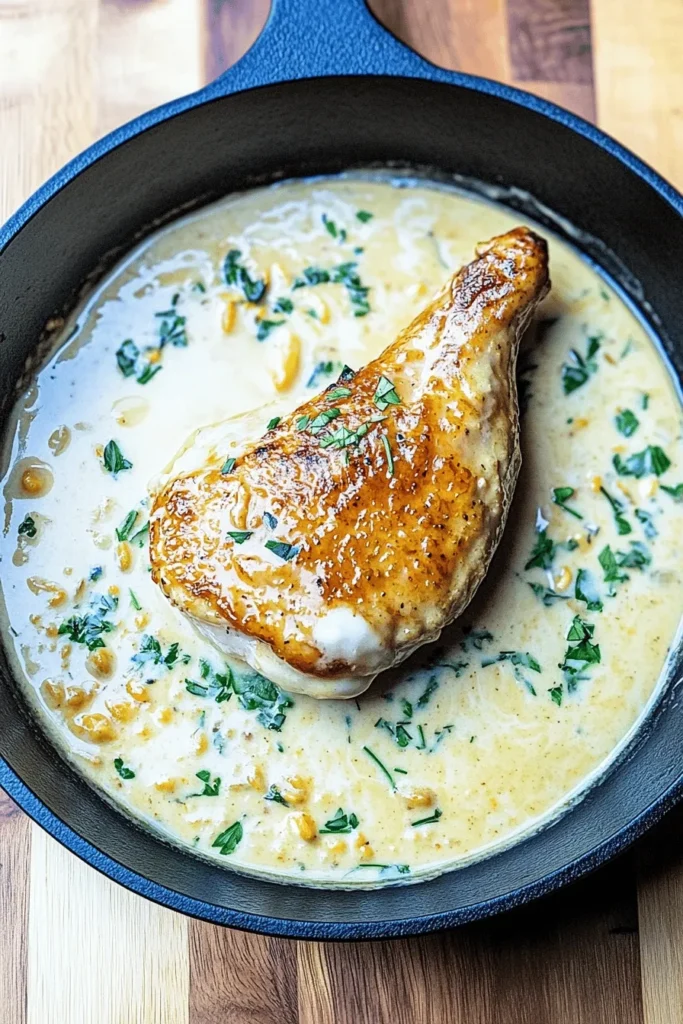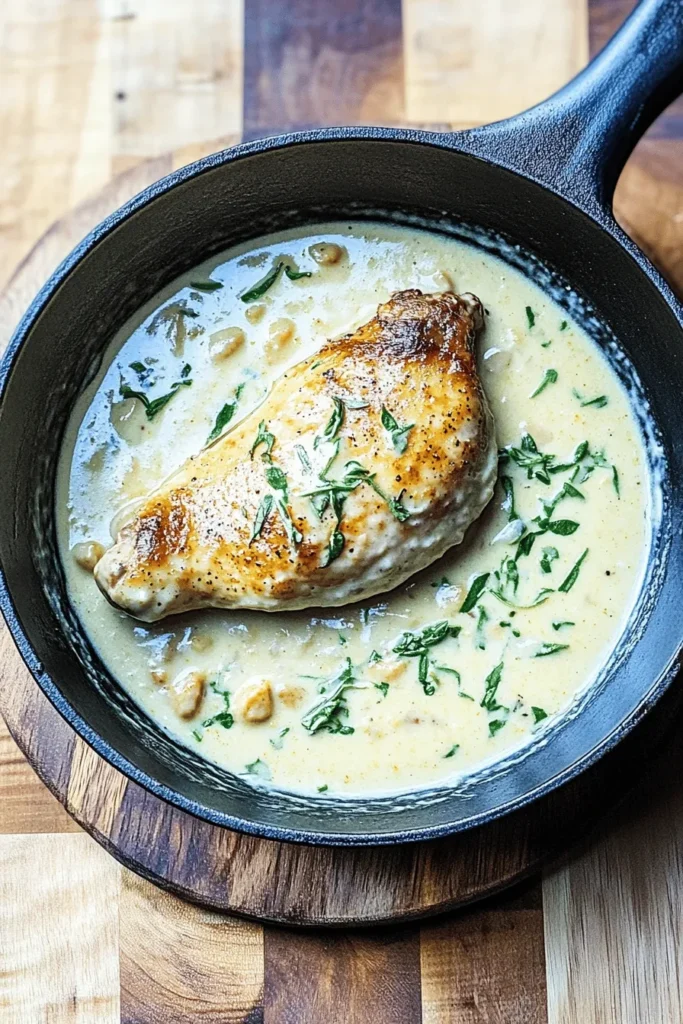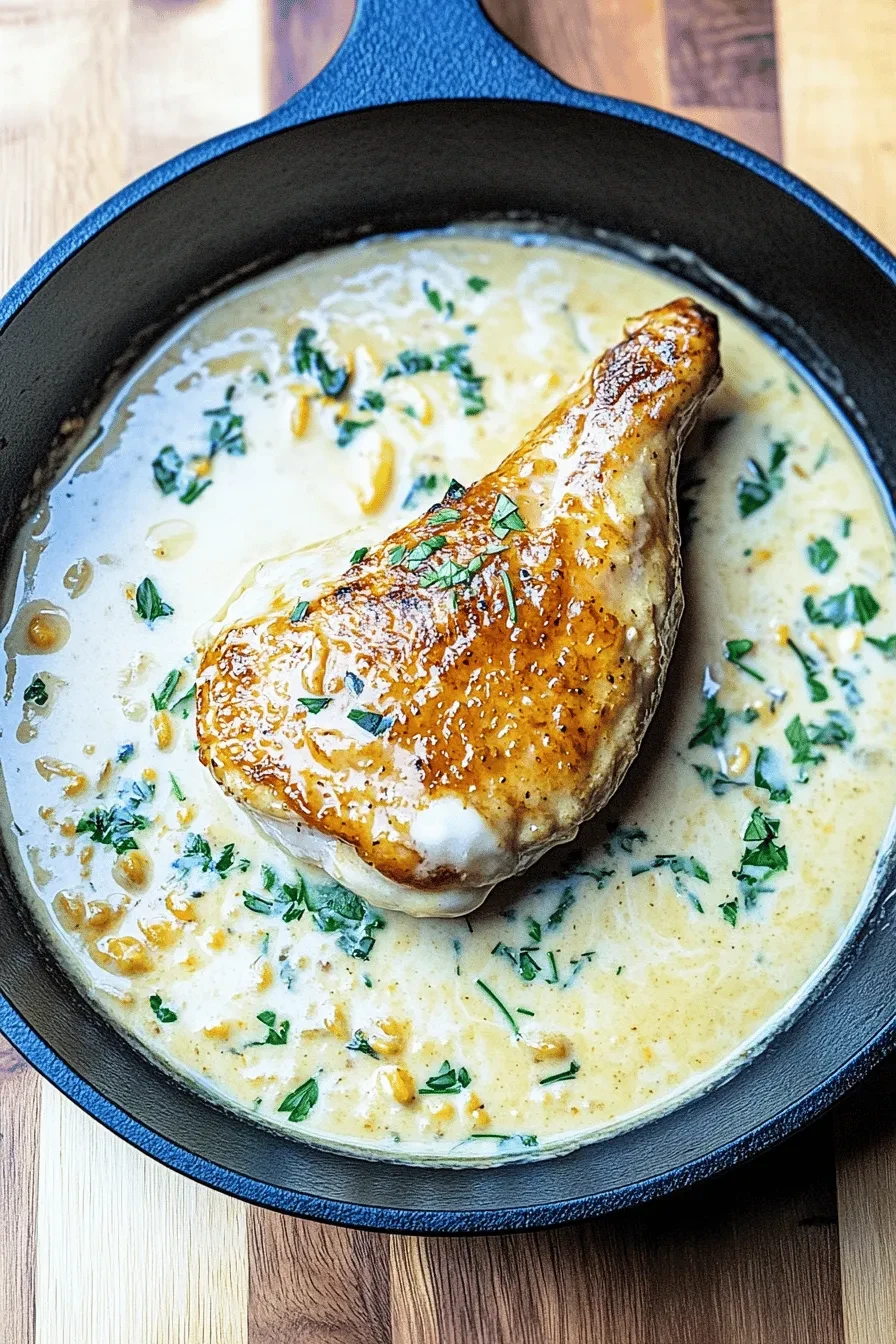This luxuriously silky mustard velouté sauce turns everyday dishes into something truly special. As one of the French mother sauces, it brings elegance to your table without complicated techniques. Below you’ll find my foolproof recipe and tips for creating this velvety, tangy sauce that pairs beautifully with chicken dishes and so much more!

Why You’ll Love This Mustard Velouté Sauce
- Rich and velvety smooth texture that coats your spoon perfectly
- Made in just one pan with basic pantry ingredients
- Ready in under 15 minutes
- Perfectly balanced tangy-creamy flavor from Dijon mustard
- No fancy equipment needed – just a whisk and saucepan
- Transforms simple proteins into restaurant-worthy meals
- Make-ahead friendly and reheats beautifully
This sauce has seriously become my secret weapon in the kitchen! The way it transforms simple roasted chicken or steamed vegetables into something extraordinary is pure magic. And trust me, once you master this basic technique, you’ll feel like a professional chef – minus all the stress!
The History Behind This Classic Sauce
Let me tell you why this sauce is so special! It starts with a classic velouté – one of the five mother sauces that form the backbone of French cuisine. When Auguste Escoffier documented these sauces, he probably knew home cooks like us would still be making them centuries later! The magic happens when we add Dijon mustard to that silky base, creating a sauce that’s both sophisticated and approachable.
What I absolutely love about this sauce (besides its incredible flavor!) is how it takes everyday ingredients and transforms them into something that tastes like it came straight from a French bistro. The best part? You don’t need any fancy culinary training to make it perfect every single time!
Culinary Uses of Mustard Velouté Sauce

Let me tell you why this velvety sauce has become a staple in my kitchen! While it may sound fancy, this versatile sauce pairs beautifully with so many dishes. I especially love drizzling it over my creamy chicken fettuccine for an elegant twist.
Here’s how I love using this sauce:
- With Poultry: Pour it over roasted chicken breasts or turkey cutlets. The mustard adds a sophisticated tang that perfectly complements the meat while keeping it moist.
- For Seafood: A gentle coating on delicate fish fillets or pan-seared scallops transforms them into restaurant-worthy dishes. The sauce won’t overpower the seafood’s natural flavors.
- Over Vegetables: Trust me, steamed asparagus or roasted Brussels sprouts will never be the same! This sauce makes vegetables irresistible, even for picky eaters.
Mustard Velouté Sauce Recipe
Let me break down these ingredients and why each one matters:
- Butter & Flour: These form our roux – the magical thickening base. Use unsalted butter so you can control the saltiness. The flour needs to cook with the butter until it smells slightly nutty, about 2 minutes. This removes that raw flour taste!
- Stock: I prefer chicken stock for its rich flavor, but vegetable stock works beautifully too, especially for my favorite soup recipes. The key is using stock at room temperature to prevent lumps.
- Dijon Mustard: This is our star! Don’t substitute with yellow mustard – Dijon gives that perfect balance of tang and heat without being overpowering. I love using whole-grain Dijon for extra texture.
- White Pepper: I choose white pepper over black because it maintains the sauce’s pristine appearance while adding a gentle heat that builds beautifully with the mustard.
The secret to perfect consistency? Keep whisking! A silky-smooth sauce needs constant attention during those first few minutes of cooking. Trust your instincts – if it feels too thick, add a splash of warm stock. Too thin? Let it simmer a few more minutes.
Tips for Success
Making the perfect Mustard Velouté requires attention to detail, but don’t worry – I’ll walk you through every step! Here are my tried-and-true tips for achieving that dreamy, velvety consistency every time:
- Temperature Control: Keep your heat at medium-low when cooking the roux. Too high heat can brown the butter and flour mixture, changing the sauce’s color and flavor.
- Stock Temperature: Using room temperature stock helps prevent lumps. If you’re using cold stock (like when making this sauce alongside my creamy chicken pasta), add it gradually while whisking constantly.
- Mustard Selection: Stick with smooth Dijon mustard rather than whole-grain for the silkiest texture. The strength of your mustard will impact the final flavor, so adjust the quantity to taste.
- Whisking Technique: Use a figure-eight motion when whisking to ensure even incorporation and prevent lumps from forming at the bottom of your pan.
Variations and Serving Suggestions

Just like my favorite teriyaki chicken, this sauce welcomes creative twists! Here are some delicious variations:
Sauce Variations:
- Herb-Infused: Add fresh tarragon, thyme, or parsley during the final minutes of cooking
- White Wine: Replace ¼ cup of stock with white wine for extra depth
- Cream Enriched: Stir in 2-3 tablespoons of heavy cream at the end
Perfect Pairings:
This sauce is particularly wonderful with my melt-in-your-mouth chicken, but here are more serving ideas:
- Protein Options: Spoon over roasted chicken, pan-seared fish, or grilled pork chops
- Vegetable Dishes: Drizzle on roasted Brussels sprouts or steamed asparagus
- Potato Preparations: Serve alongside mashed potatoes or roasted baby potatoes
Make-Ahead Tip: The sauce can be made up to 3 days ahead and stored in an airtight container in the refrigerator. Reheat gently over low heat, whisking in a splash of stock or cream if needed to restore the consistency.
FAQs & Final Thoughts
Yes! You can prepare this sauce up to 3 days in advance. Store it in an airtight container in the refrigerator. When reheating, warm it gently over low heat, whisking occasionally. If it’s too thick, thin it with a splash of warm stock.
Lumps usually form when the stock is added too quickly or when the roux isn’t whisked constantly. For silky-smooth results, add your stock gradually while whisking continuously. If you still get lumps, strain the sauce through a fine-mesh sieve.
While Dijon is traditional, you can experiment with different smooth mustards. Just like in my Brazilian Coconut Chicken, adjusting flavors to your taste is encouraged! Avoid whole grain mustards as they’ll change the sauce’s texture.
Final Thoughts

Oh my goodness, friends – this Mustard Velouté sauce is such a game-changer in the kitchen! It’s one of those recipes that looks fancy but is actually super approachable. The first time I made it, I couldn’t believe how something so simple could taste so incredible!
Don’t be intimidated by its French origins – if you can make gravy, you can absolutely nail this sauce. The key is taking your time with the roux and whisking with love. Trust me, once you master this recipe, you’ll find yourself reaching for it whenever you want to add a touch of elegance to your meals.
I’d love to hear how this sauce works in your kitchen! Drop me a comment below with your favorite ways to use it, or tag me in your social media posts. Happy cooking! ❤️

Mustard Velouté
Equipment (affiliate links)
- 1 heavy based saucepan
- 1 Bowl
- 1 Whisk
Ingredients
- 40 g butter
- 40 g plain flour
- 75 ml white wine
- 400 ml hot chicken stock
- 1-2 tbsp Dijon mustard
- 2 bay leaves
- 50 ml double cream
- Tarragon
- salt to taste
- pepper to taste
Instructions
- Melt the butter in a heavy based saucepan, add the flour and stir in to make a roux
- Cook this on a gentle heat for 2-3 minutes
- Add the white wine, whisking all the time and allow to reduce
- Ladle or spoon in your chicken stock in three parts into the pot, whisking each time so it stays smooth
- When the stock is all incorporated, add the bay leaves, turn up the heat, continuing to stir until the sauce begins to bubble
- In a different bowl mix the mustard with a little of the sauce to make sure you don’t get any lumps (this is called a slurry)
- Turn down the heat and cook for another 10 to 15 minutes
- Add this back into the sauce, add the cream, stir in chopped tarragon and season to taste with salt and pepper
- Serve with chicken or a pork chop

Leave a Reply